Performance of iPhone 7 compared to older iPhones
Posted by Wesley on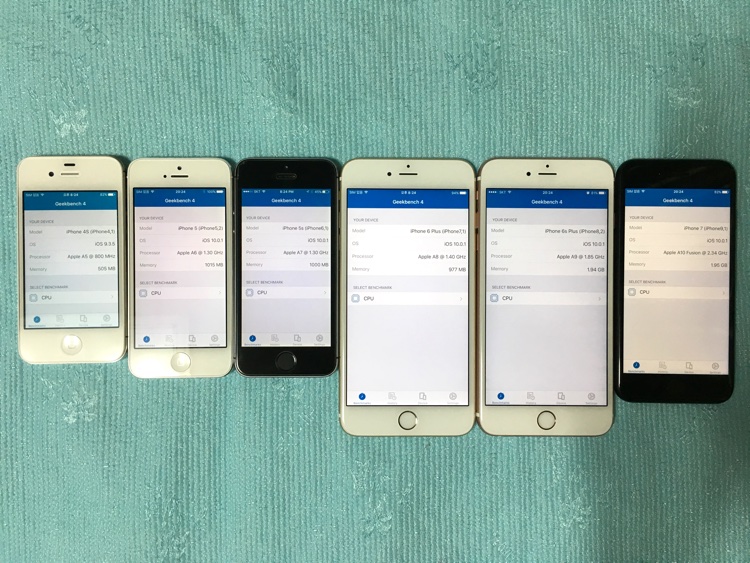
iPhone 4S, 5, 5S, 6 Plus, 6S Plus, and 7 readying to run GeekBench 4
Smartphone software and hardware become more sophisticated by the year. So a new device is expected to be faster than its predecessor. But it's a balancing act of both raw performance and power consumption. The A10 Fusion chip in the iPhone 7 series has four cores - two high-performance cores and two power-efficient cores to do just that. It's supposed to be the fastest A-series chip yet while not impacting battery life. So how does it really do on performance? Apple claims up to 2 times faster for CPU and 3 times faster for GPU compared to 2 generations ago (iPhone 6 series). Let's see if that's true.
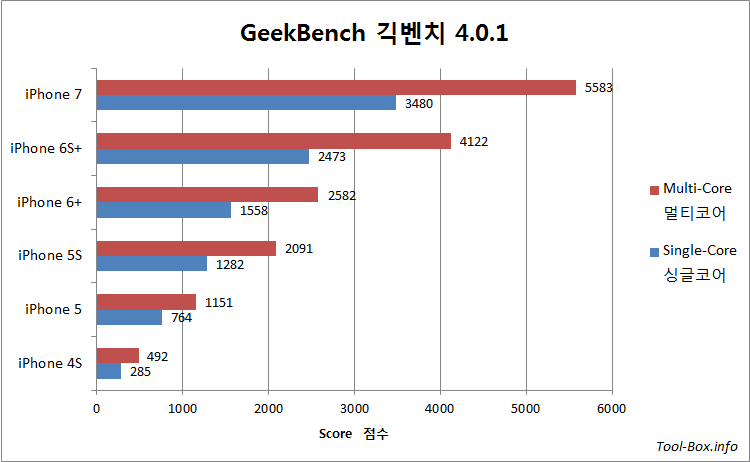
GeekBench 4 Result Details: 4S | 5 | 5S | 6+ | 6S+ | 7
GeekBench has been a standared in benchmarking CPU performance across many platforms. The 4.0.1 version that came out recently runs on iOS 9 or later, so I can only compare up to iPhone 4S. Still, you can see that iPhone 7 does indeed perform well. It is about 2.1 to 2.2 times faster than iPhone 6 Plus, and 35 to 40 percent faster than iPhone 6S Plus. We no longer have 2x performance jump like back in iPhone 5 - 5S transition, but things are in line with Apple's claim here.
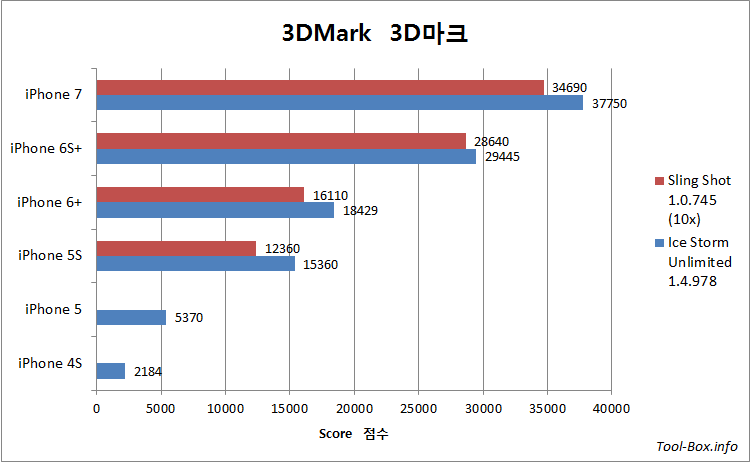
Moving on to GPU performance, I ran both the "Ice Storm Unlimited" and "Sling Shot" tests on the 3DMark benchmark suite. Due to the complexity of the Sling Shot test, it doesn't run on something slower than iPhone 5S, but the two tests show a similar trend when a device can run both. iPhone 7 pulled ahead of 6S Plus by about 20 to 30 percent, and beat 6 Plus by about 2.1 times. This falls short of Apple's "up to 3x" claims, but still quite fast. I will have to check later on if the difference in resolution affected the outcome, however.
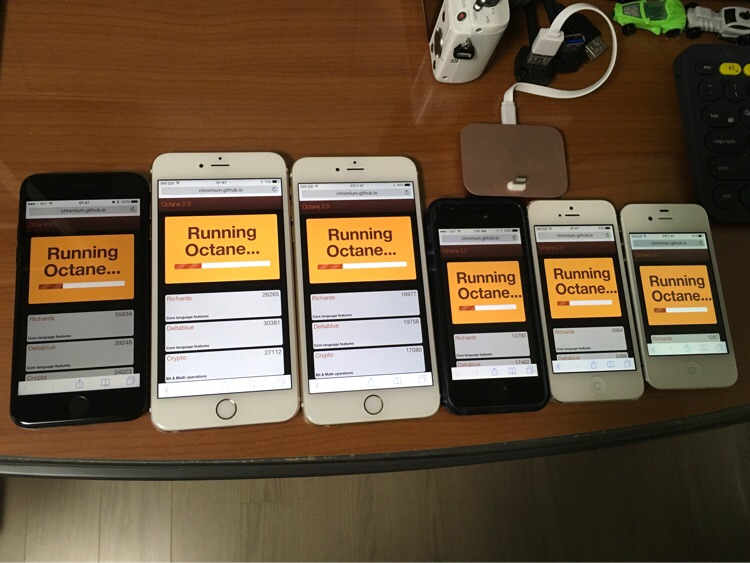
Google Octane 2 benchmark in progress for iPhone 7, 6S Plus, 6 Plus, 5S, 5, and 4S
For a casual user, measuring web browser performance may be more relevant because a lot of interaction on a smartphone depend on it, such as social media. So like last year, I ran the two well-known JavaScript benchmarks. I'm going to show the results from last year together because an OS upgrade (iOS 9.1 to 9.3.5 for iPhone 4S, and to 10.0.1 for the newer iPhones) may also have an effect.
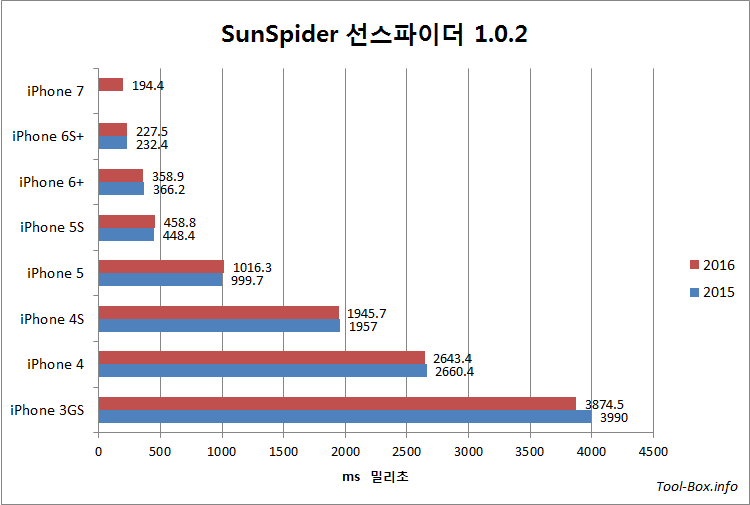
SunSpider Result Details: 3GS | 4 | 4S | 5 | 5S | 6+ | 6S+ | 7
SunSpider is an older JavaScript benchmark, and thus can be used on iPhone 3GS and shows how far the iPhones have come. For iPhone 7, it does not seem to be complex enough and might be starting to hit a bottleneck, being only about 17% faster than iPhone 6S Plus and slightly lower gain compared to the GeekBench numbers. But in general, it follows the CPU performance gain closely.
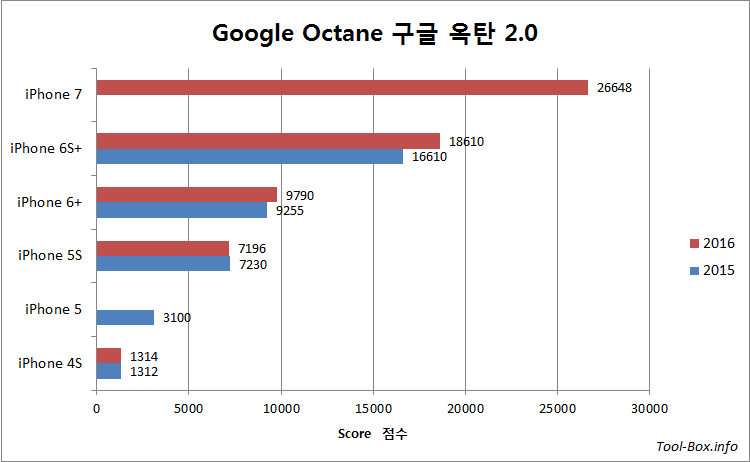
Google Octane results are much more favourable, the iPhone 7 being more than 40% faster than its predecessor. Interesting enough, the iOS 10 upgrade has also boosted iPhone 6 Plus and 6S Plus scores, hinting that the newer Safari web browser has had some performance tuning. Sadly, this does not extend to older iPhones, and for some reason iPhone 5 no longer is able to finish the test. So the newer OS may be a bit of a mixed bag for the older phones, at least for now.
Overall, it seems that iPhone 7 has received a very nice performance boost across the board according to these tests. If you're upgrading for speed, you won't be disappointed.
Defined tags for this entry: 3DMark, Geekbench, iPhone 3GS, iPhone 4, iPhone 4S, iPhone 5, iPhone 5S, iPhone 6 Plus, iPhone 6+, iPhone 6S Plus, iPhone 7, Octane, SunSpider